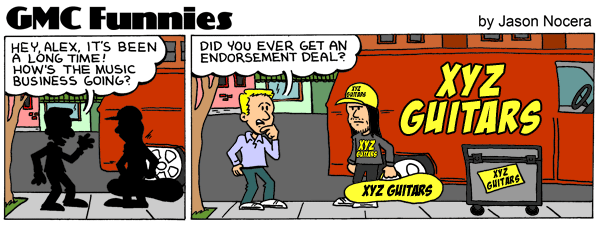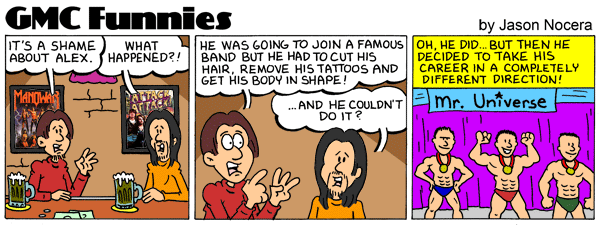Question On Alternate Picking/ Three Notes Per String, Dealing with problems of the right hand |
|
|
|
|
|
| Apr 24 2012, 03:02 PM |
|
Hi and Welcome to the site mate! Always feel free to ask whatever you need!
Dark dude gave you the correct answers to your questions. Let me add that I have a lesson at the forum about Inside & Outside picking that could help you to train this ways of crossing strings. There is a technique course that I'm giving every Friday at 19 hours at the forum and the topic some weeks ago was this one. Here you can check the lesson notes for that session: LESSON #12 – INSIDE & OUTSIDE PICKING Check it out! -------------------- My lessons
Do you need a Guitar Plan? Join Gab's Army Check my band:Cirse Check my soundcloud:Soundcloud Please subscribe to my:Youtube Channel |
|
|
||
|
|
|
|
| Apr 24 2012, 03:08 PM |
|
Aye, that's a great set of exercises - be sure to check them out, dairwolf.
-------------------- Ibanez 2550E
LTD EC-1000 VB Roland Cube 30W |
|
|
||
|
|
|
|
| Apr 24 2012, 04:47 PM |
|
Hey everyone, I´m new to this forum and this is my very first post. Maybe my below questions have been answered already somewhere in the forum but when I did a search I couldn´t find the answers I´m looking for. I have a what I think a very specific question about alternate picking. I´ll try to keep this short, but I´m afraid it might rather get long. My questions concern three note per string patterns and alternae picking in general. I´ll use tabulature to illustrate my problems. Here we go, starting with a three note per string-pattern: u d (u) d u (d) u d (u) d u (d) E--15-14-12----------------/---15-14-12-------------- B--------------15-14-12----/---------------15-14-12-- So here we have a three note per string pattern which is beeing played repeatedly, starting with an upstroke, all alternate picking. I used paranthesis to exaggerate my problem parts. My question regarding this lick now is: When the right hand changes from the high e string to the lower b string with an upstroke, do you ONLY hit the e string and move the pick in a way that it doesn´t hit the b string, or do you hit BOTH the e string AND the b string and mute the be string with the index finger of the left hand, so that it doesn´t ring? This is the same lick, but this time starting with a downstroke, again I emphasised the problem part: d u d u d (u) (d) u d u d (u) E--15-14-12----------------/---15-14-12-------------- B--------------15-14-12----/---------------15-14-12-- This time the question is: After you hit the last note on the b string, do you do some extra move to avoid hitting the b string again when doing the upward movement, or do you hit both the b string and the e string, muting the b string with the index finger of the left hand? I guess you understand my problem so I won´t post examples considering five note per string patterns cause it´s basically the same. Sorry that this post got rather long, but I think it covers a very important point regarding alternate picking. Best regards, Tobi I´m sorry that the right hand description got messed up, maybe someone can fix it for me? Hi! Well usually 3 note per string patterns use for economy picking sometimes alternative! When you are switching strings you don't hit B string What you need to do is coordinate your hands together so you won't have this problem again! If you want you can sign up for my mentoring program and I will guide you through!!! Here is the link https://www.guitarmasterclass.net/guitar_fo...showtopic=43564 -------------------- |
|
|
||
|
|
|
|
| Apr 25 2012, 09:39 AM |
|
hehe, guess the guys got here first
|
|
|
||
1 User(s) are reading this topic (1 Guests and 0 Anonymous Users)
0 Members:

























